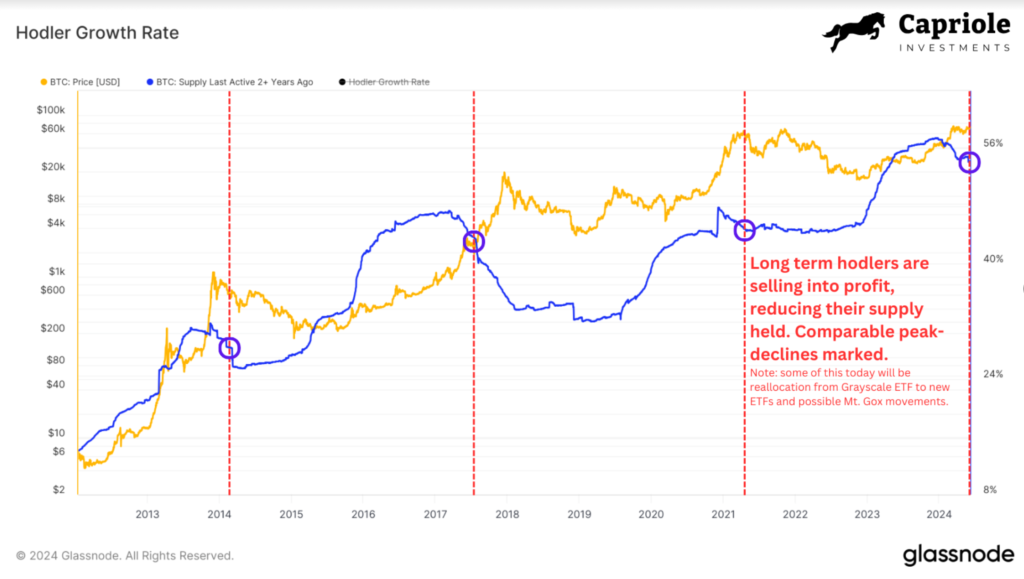Traders explain why Inflows into Spot Bitcoin ETFs in the United States caused no increase in Bitcoin price on the 19th day.

Numerous individuals wonder why Bitcoin’s price has not surpassed its all-time high established in March, despite a record 19-day stretch of inflows into United States-based spot Bitcoin exchange-traded funds (ETFs). According to analysts, they possess the solution.
The U.S.-listed ETFs held a significant portion of the approximately 1.3 million Bitcoin, or 5.2% of the BTC circulating supply, that was held by ETFs worldwide, according to HODL15Capital.
At the same time, analysts assert that the price is influenced by many other factors and that the ETFs lack sufficient influence.
Capriole Investments founder Charles Edwards stated to Cointelegraph, “ETF flows are exceptional; however, they are not yet sufficient to surpass the entire ecosystem’s selling.”
“You know that the market comprises spots, futures, ETFs, and options — correct?” Crypto trader Christopher Inks stated in a June 7 X post that the price at any given moment results from all of these factors rather than just one.
“The price of BTC is more significantly impacted by macroeconomic factors and geopolitical events, despite the significance of ETFs,” Radar Bear, the co-founder of the cryptocurrency exchange, explained to Cointelegraph.
Bitcoin ETFs may need to be introduced in additional markets
On June 6, the net inflows of Bitcoin ETFs totaled $217.7 million, as indicated by data from Farside. Since their inception, spot Bitcoin ETFs have received over $15.5 billion in inflows. However, some traders contend that this sum cannot impact prices until other markets become operational.
“There are currently no spot Bitcoin ETFs available in the United Kingdom or Japan, two significant markets.” Timothy Peterson, the proprietor of Cane Island Alternative Advisors, stated to Cointelegraph that there is ample opportunity for expansion.

Bitcoin experienced a nearly 53% increase in value following the approval of spot Bitcoin ETFs on January 10, reaching all-time highs of $73,679 by March 13.
In the nearly three months since then, it has been unable to make any further gains, primarily trading within its high support level range.
Long-term holder movement is a major factor
Edwards reports that the proportion of the total Bitcoin supply held by this group has decreased marginally to 54% in the past six months. This fact has a significantly greater influence on Bitcoin than it may appear.
“While 3% may not appear to be a significant amount, it is equivalent to approximately 630,000 Bitcoin, or approximately three times the total amount purchased by all Bitcoin ETFs in the United States,” he clarified.

He also noted that the effects of the Bitcoin halving have not yet manifested:
“We likely haven’t seen the impacts of the Halving, with the daily Bitcoin issuance dropping by 50% in March. We will likely see the delta between ETF consumption and Bitcoin mined widen substantially over the next 12 months.”
